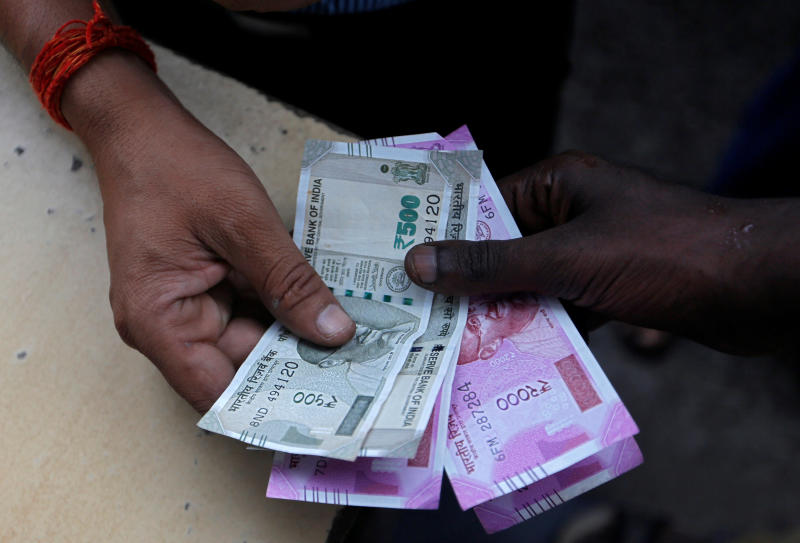India's cash ban failed even to create a bank savings culture
Sign up now: Get insights on Asia's fast-moving developments

Households that traditionally kept their savings in cash would now prefer to put the money into other instruments, perhaps even the stock market.
PHOTO: REUTERS
Mihir Sharma
Follow topic:
NEW DELHI (BLOOMBERG) - The Indian central bank's final tally of Prime Minister Narendra Modi's 2016 demonetisation drive, intended to take money derived from tax evasion out of circulation, showed that 99.3 per cent of outlawed high-value banknotes had been returned.
That is a severe loss of face for officials, who had argued that holders of the cash would rather destroy it than return it to banks, providing a windfall for the government.
The authorities managed to produce several other defenses of the initiative, however. One in particular was appealing to financial markets: The notion that, in Finance Minister Arun Jaitley's words, "Demonetisation appears to have led to an acceleration in the financialisation of savings."
Households that traditionally kept their savings in cash would now prefer to put the money into other instruments, perhaps even the stock market.
This would increase the amount of capital available for companies to deploy and banks to lend, spurring economic growth.
There certainly were some indicators to support the idea. For one, Life Insurance Corp of India saw a 142 per cent increase in premium collection in the month demonetisation was carried out. And Indian stocks have been on a record-breaking run, even though foreign investors were net sellers so far this year.
Unfortunately, the Reserve Bank of India (RBI) punched a hole in that hypothesis, too.
Its annual report, as well as tallying the result of demonetisation, provided a breakdown of savings by households, a category that includes small and unregistered enterprises.
It turns out that net financial savings for the fiscal year that ended March 31 were 7.1 per cent of overall disposable income - less than the average for the five years prior to demonetisation.
Worse yet, perhaps, households are keeping far more of their net savings in cash, not less.
And their net savings going to banks are almost 50 per cent lower than the five-year average before demonetisation.
In other words, the idea that the crackdown would leave banks flush with household savings that they could lend to productive parts of the economy has been comprehensively debunked.
What is going on? Some have argued that lower interest rates are the problem.
That is not an easy sell: Over the past year, India was one of the few countries with strongly positive real rates - and savings in bank deposits were a higher fraction of disposable income back in 2012-14, when Indians were dealing with negative real interest rates.
Perhaps, instead, a change in behaviour is responsible. For most Indians, the defining experience of demonetisation was losing access to their bank accounts: We had to stand in long lines at ATMs, and our withdrawals were strictly rationed.
In contrast, those who had piles of old banknotes appeared to be able to change them (at a black-market-determined discount) with ease.
What would you learn from this?
Would you trust a banking system that can be closed down on a prime minister's whim?
For many Indians, demonetisation provided their first experience of banks or digital payments.
I just hope the insanity of the process did not put them off formal finance forever.
Still, you might say, at least the markets are doing well. That reflects households' greater willingness to put their savings in stocks, right?
And yes, the central bank RBI data do indeed suggest that.
But look a little closer and things are not so bright. One of the reasons domestic institutional investors - who pumped US$10 billion (S$13.7 billion) into Indian markets so far this year, while foreigners took US$280 billion out - are bullish is because they believe a structural change is under way in how Indians save.
They think we are moving permanently away from cash (and gold, and real estate).
A turn toward financialisation means ever-higher equity prices.
The central bank data, however, suggest we should not be so sure about that.
The heights being scaled by Indian markets might prove brittle.
Whatever the impact on savings behaviour of demonetisation, it is clear the initiative was a policy failure, even on the administration's own terms.
I would like to think a lesson was learned.
Not so fast: The government just appointed one of the brains behind the 2016 project to the board of the central bank.
India's era of ill-advised intervention may not be over.

